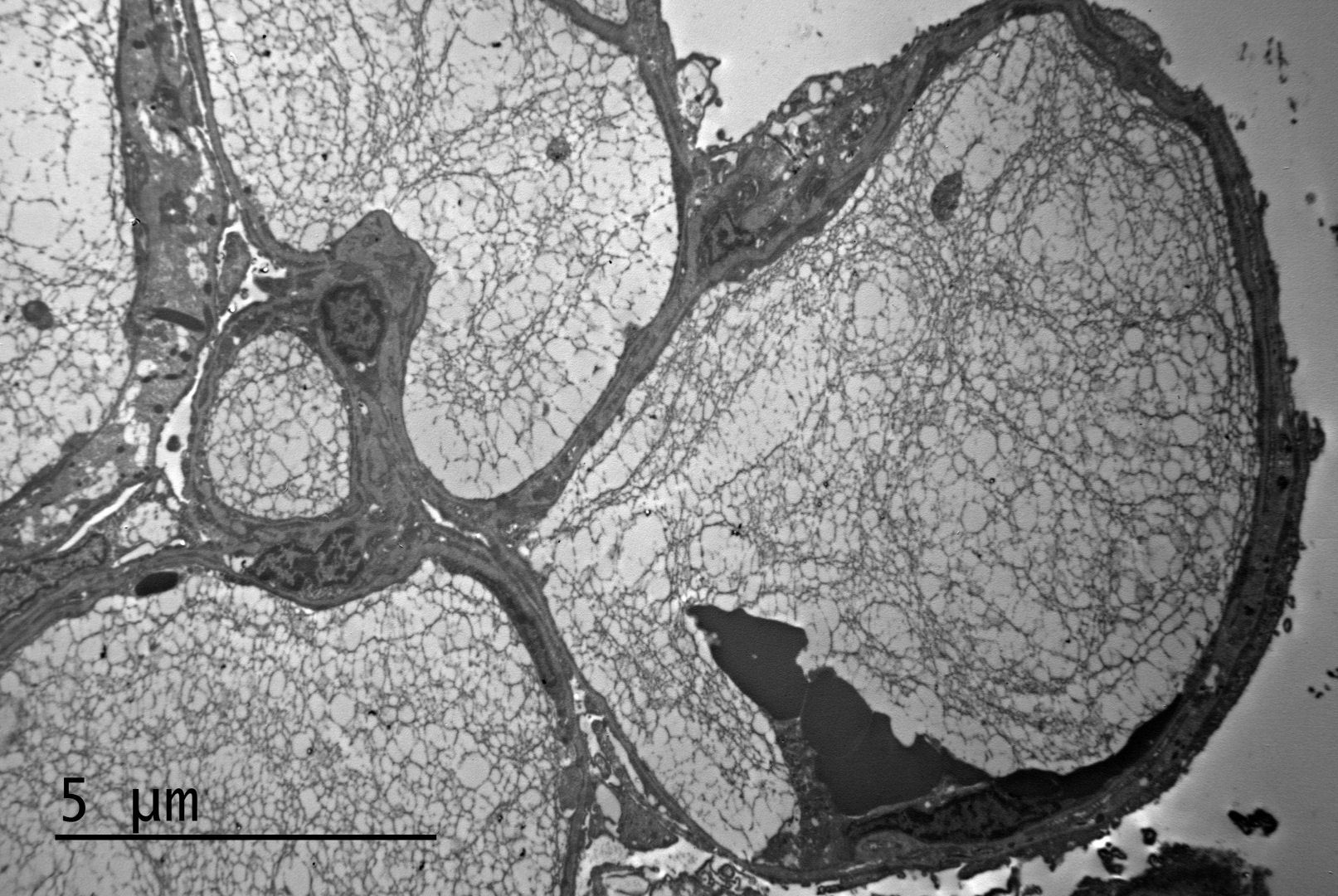What is the finding shown and what disease does this likely represent?
This electron photomicrograph shows a lipid ‘thrombus’ composed of numerous lipoprotein particles, a finding most frequently associated with lipoprotein glomerulopathy. This is an extraordinarily rare disease that is due to underlying APOE gene mutations (a component of chylomicrons and intermediate density lipoprotein particles). The disease presents clinically with proteinuria and half of patients progress to renal failure. Clinical correlation with serum apolipoprotein E level may be helpful as it is often increased. However definitive diagnosis requires sequencing of the APOE gene. The major differential diagnosis morphologically is fat embolus, however, fat emboli tend to lack the finely vacuolated pattern seen here on electron microscopy.
Quick note: This post is to be used for informational purposes only and does not constitute medical or health advice. Each person should consult their own doctor with respect to matters referenced. Arkana Laboratories assumes no liability for actions taken in reliance upon the information contained herein.

